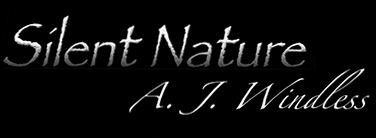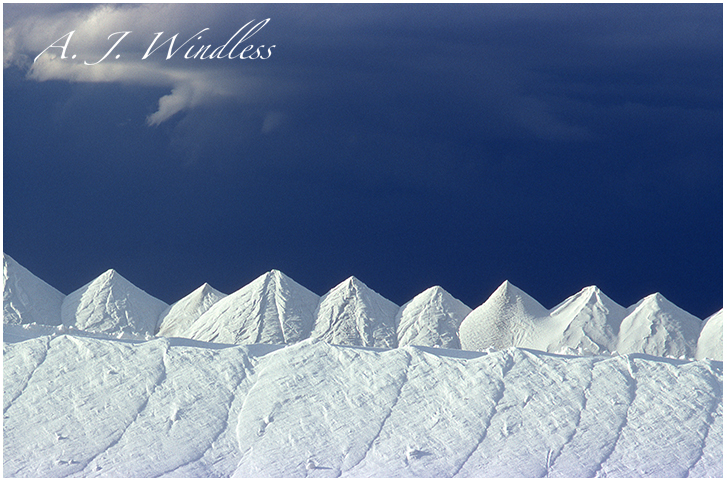| |
|
I love it when deep dark blue storm clouds backdrop a bright
sunlit foreground, and what is amazing here is how well this
photograph turned out. One of the biggest challenges a beginning
photographer will face is contrast, and understanding contrast
is one of the first things you should learn about photography.
There is a difference between what your eye can see and what
your film can record. As your eyes move from the bright light to
the shadows your brain adjusts what you are looking at so that
the shadows have detail. Film cannot do that. It records
everything in the picture at the same level. That's why if you
shoot an image with both bright sunlight and heavily shadowed
areas you may get some detail washed out of your sunlit areas
while some of your shadows may look black (see my "Mt. Ranier
Sunrise" photo.) And what you are using to record your image has
a lot to do with how much contrast you can comfortably record.
For example, black and white film will give you the widest range
of contrast (the most detail) followed by color film, while
color transparency, or color slide film, allows only the most
narrow range of contrast. Of course, today's digital cameras,
especially if your photos are displayed on a digital monitor
rather than printed on paper, give you much more contrast to
work with. In addition to that, some cameras are set up to take
multiple samples and then combine the best parts of the photo
into one image. You can also take multiple exposures of your
image and then work them in photoshop, combining the correctly
exposed dark areas with the correctly exposed bright areas. But
understanding what makes a good photograph is much more valuable
than trying to change it in photoshop. This is why they say,
"Shoot on a cloudy day." Certainly the best way to record faces
is in subdued light rather than bright sunlight. What is amazing
about the above photo is that it was captured on color slide
film, the least forgiving of all the options I have discussed
here, and yet it turned out beautifully. Look at how much detail
there is in the white salt that is directly in the sunlight. I
had no monitor and I could not see the result until after the
film was developed, yet I feel the contrast here has been
recorded perfectly. I have done no photoshopping in this image,
no exposure adjustment, no contrast adjustment, no color
balance, nothing at all. I simply developed my film and then
years later scanned my film as is, no post scan adjustments
(other than cleaning little black dust particles off the image
... I had no air compressor with which to blow the dust off of
my film. I clean each of my digital scans by
hand, one spot at a time, and it took me about an hour to clean
this image.)
Above photo: Piles of salt near the Great Salt Lake. The salt
from this lake has made a name for itself on the Bonneville Salt
Flats where the world land speed records are set. It's also
known because of the fact that you can't sink in the Great Salt
Lake. And here you see your table salt being gathered and
shipped all over the world. |
|
|
|

